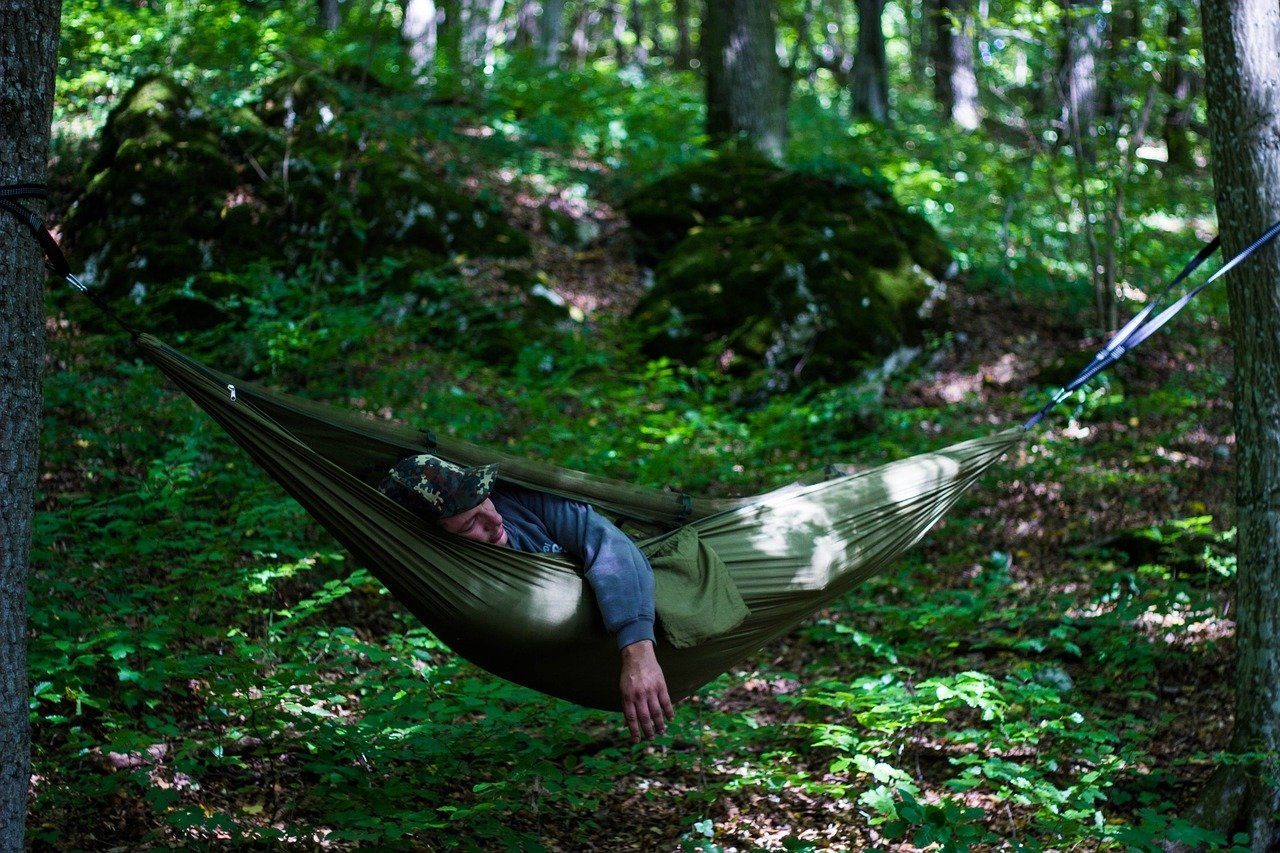Hammocks provide a comfortable way to sleep in the outdoors. They take up very little space in a pack, and are extremely lightweight. However, as many prefer to sleep on their side, people often wonder how to find the ideal hammock for this sleeping position.
A bridge hammock is recommended for side sleepers. Their design is flatter compared to other hammocks, allowing you to sleep comfortably on your side since they don’t cocoon around your body. Bridge hammocks come with strong spreader bars, and are spacious for side sleepers.

There are a few things to consider when choosing a hammock if you’re a side sleeper. Read on to find out everything you need to know.
Table of Contents
Choosing a Comfortable Side Sleeper Hammock
Hammocks fall into one of two categories: traditional, also known as the gathered-end hammock, or the bridge hammock.
These two categories have unique characteristics that make them ideal for people who sleep in certain positions at night. They also have their own advantages and disadvantages. To better understand why bridge hammocks are ideal for side sleepers, read on below.
Traditional Hammocks
Traditional hammocks can be identified by the fabric that bunches up at each end. Once they are suspended, they have a sag in the center that often resembles bananas when you look at it from one side. Many campers prefer traditional hammocks because they are simple to use and setup, lightweight, offer more options for sleeping positions, and provide easier tarp coverage.
While it’s not entirely impossible to sleep on your side on a traditional hammock, those who do tend to be more comfortable on a fetal side sleeping position.
Bridge Hammocks
Bridge hammocks use a spreader bar on each end. Spreader bars are usually made out of wood or metal, and their primary purpose is to ensure the hammock fabric is taut, flat, and properly spread out. Bridge hammocks have almost no sag, and its taut center makes it more comfortable for side sleepers.
Bridge hammocks have long been the preferred choice for side sleepers especially when you sleep diagonally on it. They can be set up in such a way that one side has a slight curve for it, which is perfect for slightly hugging your knees while sleeping on your side.
However, bridge hammocks require much more of an investment and they are heavier because of the spreader bars. They’re more difficult to cover with a tarp, and the spreader bars can poke through them if you aren’t careful in setting up. Fetal sleeping positions are also uncomfortable at best on this type of hammock.
It’s good to note that while you may be a side sleeper at home, camping, especially frequently, can actually introduce you to other sleeping positions you are comfortable with in the outdoors. For example, many who are side sleepers at home have discovered that while on a hammock, they have gotten used to sleeping on their back comfortably. So no matter what type of hammock you go with, you could also experiment with other sleeping positions.
How Can Hammocks Be More Comfortable For Side Sleeping?
Sleeping on your side comfortably on a hammock, just like in a bed, boils down to personal preferences. Here are some ways you can make the experience more cozy:
It also helps if the fabric has double or triple stitches for sure strength. The material and its weight should also be determined by the weather or terrain you’re traveling in. Lightweight options are best for hikers and climbers, while a thick hammock with zipper is recommended for those camping in the cold.
Conclusion
If you are open to trying sleeping on your back, you could go with a gathered end hammock or try sleeping in a fetal position on it. But if you are bent on side sleeping, a bridge hammock is the way to go especially if you provide extra support for your neck with a good neck pillow. You’ll simply need to deal with the added weight on your pack and shelling out more money for it.
Last but not least, comfort is subjective. It may take some experimentation for you to figure out which hammock works best for your needs as a side sleeper.
Frequently Asked Questions
What Is the Best Camping Hammock for Side Sleepers?
There are numerous camping hammocks out there that tick all the boxes for side sleepers. These models are selected for their excellent ergonomics, flat lay, large size, durable materials, and the right features for setting it up properly for a good night’s rest.
- Lawson Blue Ridge (True bridge)
- Tentsile Una (3 anchor points)
- Ridge Outdoor Pinnacle 180 Hammock (Structural ridgeline)
What Is the Best Backpacking Hammock for Side Sleepers?
The primary difference between camping and backpacking hammocks is their weight. Weight is the primary consideration for backpackers who require light or ultralight hammocks, while durability is more important for campers who use their hammocks for hanging out and for shorter trips.
- Ridge Outdoor Pinnacle 180 Hammock (1.79 pounds)
- Lawson Blue Ridge (4.25 pounds)
- Tentsile Una (4.93 pounds)
Lastly, always go with a hammock brand that is renowned for world-class customer support and a great warranty. This is especially important if you are still experimenting with various hammocks and want the peace of mind that you’ll be able to return or exchange a product if it doesn’t meet your needs.
